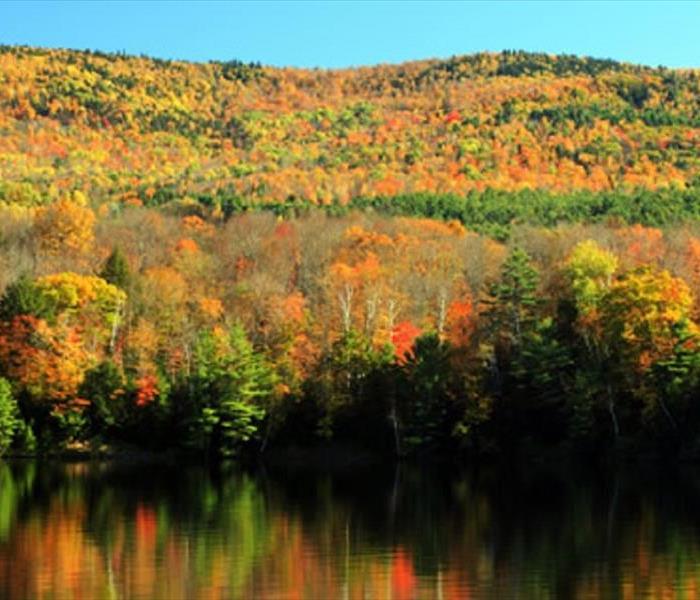Why Do Leaves Change Color?
10/8/2014 (Permalink)
Fall foliage is one of nature's most beautiful displays, but what makes it happen?
Between late August and early October, people across North America travel hundreds of miles to witness one of Mother Nature’s most beautiful pieces of artwork: fall foliage. A breathtaking natural spectacle, the wild splashes of red, orange, brown and yellow leaves racing up and down rolling hills and lining quaint neighborhoods have a certain homey nostalgia. Some places seem to have a tendency to produce more flamboyant versions of this natural artwork than others, and there's a good reason for it.
Those green leaves that we turn to for shade on hot summer days contain what is called chlorophyll. So much of this pigment is in the leaves that it masks the other pigments. Sunlight is one of the biggest factors in providing chlorophyll, so summer is when green leaves thrive. However, as light diminishes with the approach of autumn, so does the chlorophyll. This allows the other natural pigments, called carotenoids, to steal the show. The carotenoids come in yellow, brown, orange and a variety of hues in between.
There are other colors, however, that appear on leaves that weren't there before, and these are from anthocyanin pigments. Red and orange colors form due to an increase in sugar concentration in plants, typically occurring toward the end of summer. The more anthocyanins present in the leaves, the more burning reds you'll see on your next fall foliage trip.
Colder, northern climates tend to accelerate the process of chlorophyll decomposition. For instance, St. Paul, Minn., sees fall foliage peak in late September, but Tulsa Okla., likely sees it peak in early November. Temperature does affect leaf coloration to some degree, but it is not the determining factor. If it's a sunny autumn in your area, you'll see the brightest fall leaves.
If you live in an area with plenty of autumn sunshine and cool, crisp nights, expect a dazzling show this year. On the other hand, if the clouds just won't quit and the air remains a bit on the mild side, expect a more conservative presentation of duller yellows and browns.
5 quick facts about fall foliage
An increase in carbon-dioxide levels could further delay the onset of fall foliage colors in the coming years.
Leaves of some trees, such as birch, tulip poplar, redbud and hickory, are always yellow in the fall — never red.
Evergreen trees may shed their older leaves, which often turn bright yellow, in spring rather than fall, but they never drop all their leaves at one time. That's why they stay green all year.
The most vivid colors on tree leaves typically can be observed after a succession of very warm sunny days in autumn that in turn give way to cold, but not freezing, nights.
The most varied fall color, as well as the longest-lasting, occurs in areas such as the southern Appalachians, where a dozen or more kinds of trees may change color at slightly different times over the season.




 24/7 Emergency Service
24/7 Emergency Service
